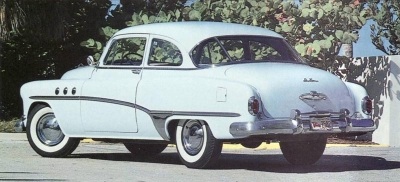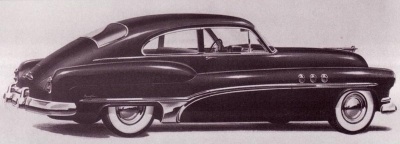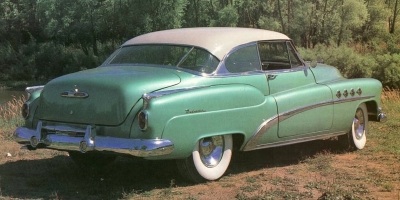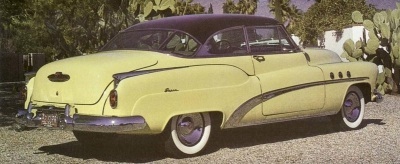Buicks of the 1950-1953 period have become American icons in the tradition of Coca-Cola machines, Route 66 signs, and Standard Crown gas pump globes. No other car symbolizes postwar promise and prosperity like the bulbous, toothy Buick. The ubiquitous Buick offered a model for every buyer in most every price class. In the days when the buck stopped with Harry Truman, and well into the Eisenhower years, Buick absolutely dominated the American automobile scene above the Chevy-Ford-Plymouth trio. GM's Flint, Michigan, division did it with a combination of bold styling, innovative marketing, and a dealer organization second to none.
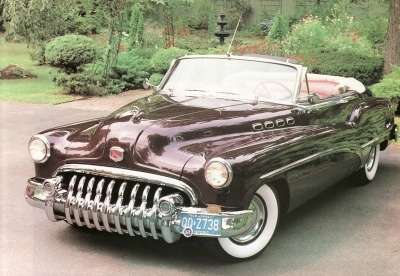 This 1950 Buick Roadmaster convertible is just one of many classic cars that Buick was known for in the 50s. See more pictures of classic cars. |
For 1948 and 1949, GM provided a very unique and advanced C-body for the Oldsmobile 98 and Cadillac. Actually, it had originally been designated the B-body, but became the C-body late in the game. In any case, Buick passed on it for 1948, then adopted it for 1949, for reasons that have never been made entirely clear.
Most likely, Buick's powerful general manager, Harlow Curtice, felt that his division -- the most successful of the three -- didn't need a radical and untested body to further improve sales in 1948. This so-called P-38 body was developed by designer Frank Hershey under the strong influence of GM styling czar, Harley Earl. It was directly inspired by the Lockheed P-38 Lightning airplane, and the key to its design was a high belt-line, but not quite up to the windowline, running in a straight line from the front of the vehicle to the very rear.
The P-38 was developed as a Cadillac, with Olds stylists executing their own distinctive version. Chevrolet and Pontiac developed their own much smaller A-bodies a year later, and the Olds 76 and 88 also used it.
The larger C-body ended up being an extremely controversial design with dealers, top management, and especially with the Buick Division, which adapted it for only one short year. The prevailing feeling seemed to be that it was just too radical a design for GM's top-end cars. It has been said that Harlow Curtice, who moved up into GM corporate management at the end of 1948, and finally to the GM presidency in 1953, was particularly lukewarm to the P-38 body. Curtice was succeeded at Buick by Ivan L. Wiles. While not as great a leader as Curtice, Wiles still had the "old man" to lean on.
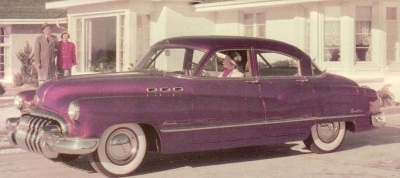 Buicks in the 50s, like this Super Touring Sedan were all about curves. |
Considering the mood in the top echelons at GM, it's easy to see why B- and C-bodies would be all-new for 1950. Carrying this scenario a step further, the Buick Division would obviously have a very strong say in 1950 B- and C-body design. Now this was the era of the rounded body, seen in fullest flower in the "bathtub" Packard, Lincoln Cosmopolitan, Hudson, and Nash.
Looking at this trend with the high fenderline and often no rear fenders at all, Harley Earl decided to move away from the crowd in 1950 by dropping the fenderline and adding a distinctive dip to accentuate the rear fenders. To a degree, he was going back to the 1942-1948 Buick and his own 1938 Buick Y-Job show car.
This didn't bother Earl in view of corporate pressures and his own desire to break from 1948 to 1949 styling. It should also be noted that Earl was simultaneously developing the LeSabre and XP-100 "dream cars," which carried the same general fenderline as the 1950 production cars.
For more information on cars, see:
Advertisement




